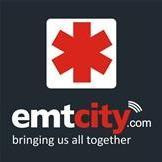By Clay Bailey
The unanimous vote by the Germantown Board of Mayor and Aldermen this week means Fire Chief John Selberg will do something that city officials and fire chiefs have wanted for at least two decades - run an ambulance service in Germantown.
Tightened budget numbers and growing suspicions about what the new county contract actually would offer in service levels convinced aldermen to approve the city getting into the ambulance business this summer.
Emergency personnel from the suburb now will not only answer emergency calls and treat patients at the scene, but will also stay with them as the patient is transported to the hospital.
"It really means a lot to those guys out there on the trucks that provide that day-to-day medical care to know that now they get to do it all the way through," Selberg said of the decision. "That means a lot to them."
Germantown will become only the second suburb to operate its own ambulances. Bartlett has provided service since the mid-1970s. Arlington, Collierville, Lakeland, Millington and unincorporated Shelby County are served by the county contract.
Under the county contract, current ambulance service vendor Rural/ Metro arrives on a Germantown scene as city paramedics treat patients, and then in most cases, hand them off to the private company for transport.
The contract with Rural/Metro expires at the end of June, and county officials are looking at several service options and vendors to provide the service in the upcoming fiscal year.
Aldermen initially split 3-2 against city-run ambulances in February, citing tough economic times and the looming cost of municipal schools if Germantown starts its own school system.
After that vote, however, Germantown officials learned the county was considering a different service model, where ambulances would be stationed at various locations based on call history and demand. Selberg told aldermen earlier this month the new concept would mean only one private ambulance in Germantown's city limits during the day and none at night - a plan quickly revised to have an ambulance in Germantown around the clock.
But aldermen like John Drinnon, who supported in-house ambulances all along, expressed concerns about trusting the county to follow Germantown's request for the same number of ambulances currently serving the city.
"The concern for me also was when we have this demand-based system come about where we (could) lose possibly one ambulance during the day and one at night," said Alderman Forrest Owens, who initially voted against the idea. "That level of service was unacceptable to me."
That led all three of the previous opponents to city-run ambulances - Owens, Rocky Janda and Mike Palazzolo - to switch their votes in favor of the ambulance business, several with the caveat that if financially the idea didn't work, they would revisit it.
Under the city's proposal, Germantown would have two ambulances staffed around the clock, and two others in reserve status. Selberg, in a March 13 memo to City Administrator Patrick Lawton, said the goal is to have response times under 7 minutes 90 percent of the time. Among the startup costs is the purchase of four ambulances for $528,000. While the initial annual cost is shown as about $2 million, part of that is offset by existing personnel and operating costs, plus the city's share of the county ambulance contract.
Germantown also is projecting about $762,000 in revenues for the first year.
"The anxiety I've had is gone," Selberg said of trying to get Germantown ambulance service. "Now the work begins. But we don't mind the work."
Mayor Sharon Goldsworthy said the decision allows the department to provide full service to residents, particularly in medical emergencies.
"I'm not certain the public fully understands that for all that we associate the fire department with those big red trucks and those uniforms, that the primary responsibility and role of our personnel in Germantown is as emergency medical responders," Goldsworthy said. "That's the largest number of calls, far and away, and it's an increasing number of calls.
" So it seems very logical and reasonable that this final loop in the manner in which people who are either seriously ill or have been injured, that those who first respond continue their care all the way to the emergency department."
Originally published by Clay Bailey bailey@commercialappeal.com 901-529-2393 .
© 2013 Commercial Appeal, The. Provided by ProQuest LLC. All rights Reserved.
A service of YellowBrix, Inc.


Recommended Comments
There are no comments to display.
Join the conversation
You can post now and register later. If you have an account, sign in now to post with your account.
Note: Your post will require moderator approval before it will be visible.